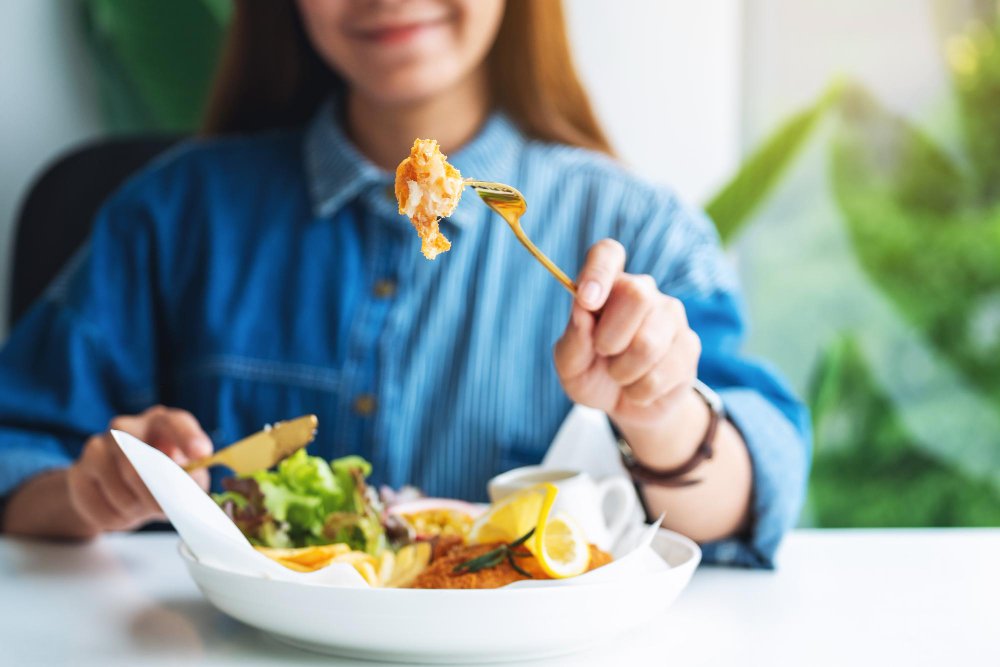The döner kebab spun slowly on its spit, juices dripping as the golden-brown meat glistened under the fluorescent lights of the train station. I was waiting for my overnight train from Budapest to Munich, stomach growling, when the smell pulled me in.
I devoured one right there and even ordered an extra for the long ride ahead—blissfully unaware that hidden within those savory slices were tiny, unwelcome hitchhikers: foodborne pathogens. That meal marked the first of four violent rounds of food poisoning I’d suffer while studying abroad, each one leaving my gut more damaged than before.
By the time I returned home, my digestion was a wreck, unable to handle foods I’d once eaten without a second thought.

For years afterward, I chased after a solution, trying every diet and expert under the sun. Gluten-free, low-carb, low-fat, vegan—I followed them all with desperate hope, but nothing truly healed me. Then, slowly, over six years of practicing yoga and learning Ayurveda, something shifted. I began to see food differently—not just as calories or nutrients, but as something alive with energy.
Ayurveda taught me that food wasn’t simply “good” or “bad.” Instead, some foods brimmed with prana (life force), nourishing me deeply, while others left me sluggish or unbalanced. I started noticing how what I ate shaped not just my body, but my mind and emotions too. Food became a bridge between my inner world and the world outside, influencing everything from my mood to my digestion.
But here’s the twist: even Ayurveda, as wise as it is, can become another cage if we let it. Just like any diet, it’s easy to turn its teachings into rigid rules—another way to ignore our own body’s whispers in favor of an outside system.
A good Ayurvedic practitioner will tell you the whole point is flexibility, adapting to your needs in each moment. But for those of us raised in the West, where diets often feel like moral codes (“good” foods vs. “sinful” ones), it’s easy to bring that same black-and-white thinking into Ayurveda.
At first, I dove into Ayurveda with the same obsessive energy I’d given to every other diet. I memorized food lists, fretted over dos and don’ts, and clung to its definitions of my “dosha” (body type) like a lifeline. There was something so comforting about it—finally, a system that explained why I was the way I was! My short temper, my sensitivity to heat, even the way my digestion acted up—all of it made sense now.
But in my excitement, I missed something important. When we hand over all our trust to an external system, even one as ancient and wise as Ayurveda, we risk losing touch with our own inner wisdom. I became so focused on following “the rules” that I stopped listening to my body.
Without realizing it, I was repeating the same old pattern—using a diet (even an enlightened one) to control and categorize my life, rather than to free myself. Over time, this kind of rigidity doesn’t lead to healing—it just reinforces our old habits, our samskaras (those deep mental grooves we’ve worn over a lifetime).
In other words, our expectations—another word for samskaras—can blind us to what’s actually happening right now.
Take spicy food, for example. I’d always been a little wary of it, but Ayurveda turned that wariness into full-blown fear. As a pitta (a fiery, intense dosha), I became convinced that even mildly spicy dishes would send me into a rage or give me heartburn. For years, I avoided them completely—until a trip to South Korea changed everything.
There, surrounded by friends and the vibrant energy of travel, I threw caution to the wind and tried the spicy local dishes. And guess what? Not only did I love them, but my body handled them just fine. Ayurveda actually teaches that any food can be okay in the right context—like when you’re relaxed and enjoying a meal with good company. My fear had twisted that into a hard-and-fast rule, but the truth was far more flexible.
The same thing happened with fried foods. After years of avoiding them (partly because of Ayurvedic advice), I finally gave in one summer on Cape Cod and ordered a basket of crispy fried oysters. They were heavenly—and afterward, something surprising happened.
My body, all on its own, craved fresh fruits and vegetables, as if it knew exactly how to find balance again. That’s the thing: when we really listen, our bodies often guide us better than any rulebook.
The real magic happens when we blend Ayurvedic wisdom with present-moment awareness. Instead of mechanically following guidelines, we pause, breathe, and ask: What do I truly need right now? Maybe it’s a warming stew on a cold day, or something light and fresh when we’re feeling overheated.
Ayurveda is meant to be fluid, adapting to our ever-changing lives. But we have to stay awake to how we’re using it. Are we slipping into another identity—the “Ayurvedic eater”—or are we using these teachings to become more aware, more free? The goal isn’t to trade one set of rules for another. It’s to wake up to the wisdom inside us, moment by moment, bite by bite.
